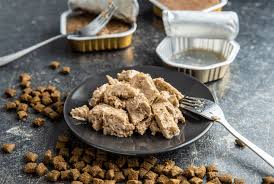Pets are family members, and as such, we want to do what’s best for them. But just like people, pets have different dietary needs that must be taken into account when making decisions about their food. In this article, we’ll go over the most common food choices for dogs and cats, provide nutritional information for each option, and give you tips on how to choose the best food for your pet.
What is the Difference Between a Dog and Cat?
Table of Contents
ToggleThere is a lot of difference between a dog and cat, both in terms of size and personality. In this article, we will focus on the differences between these two animals and help you choose the best food for your pet based on their individual needs.
Dogs are typically taller than cats and have more muscular builds. They are also energetic dogs that need plenty of exercise, which is why they are often used as hunting dogs.
Cats, on the other hand, are typically smaller and have a different personality. They are usually more laid-back and enjoy lounging around the house instead of chasing things.
When it comes to feeding your dog or cat, there are a few things you need to keep in mind. First of all, their diet needs to consist mostly of meat (or at least protein) since they are carnivores.
Dogs also need lots of vitamins and minerals to support their muscular bodies and active lifestyles. Cats, on the other hand, don’t need as much meat since they get most of their nutrients from animal prey items like fish or birds.
One thing to keep in mind when feeding your pet is their activity level. If your dog is constantly running around outside
The Different Types of Food that are Good for Dogs and Cats
The most important thing to remember when it comes to feeding your dog or cat is to provide a balanced and nutritious diet. This means that you should not only feed them food that is tailored to their specific diet, but also make sure that the type of food you are providing is appropriate for the season. Here are some of the most common types of foods for dogs and cats:
Dog Food:
There are a number of different types of dog foods on the market, but the most common ones include kibble, canned food, and raw food. Kibble is the cheapest option and can be made from a variety of different ingredients, including meat, grain, and vegetables.
Canned food is a good option for dogs who don’t like to eat fresh food, and it provides them with a balanced diet that includes moisture, vitamins, and minerals.
Raw food is best for dogs who have allergies or other dietary restrictions, as it contains no processed foods or additives.
Cat Food:
Cat food is similar to dog food in terms of its ingredients and nutritional content, but there are a few key differences. For example, cat food usually contains more moisture than dog food does.
Choosing the Right Nutritional Supplements for Your Pet
When you are looking for the right nutritional supplements for your pet, it is important to understand the various types of food that your animal consumes and the corresponding nutritional needs.
There are a few things to consider when selecting a supplement for your pet: whether your pet is a dog or cat, their diet type (raw or cooked), and whether they have any existing health conditions.
Raw diets are high in nutrients and antioxidants, which can provide benefits such as improved cognitive function and a longer life span.
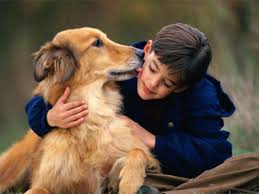
However, these diets may be difficult to implement for some pets, and some people recommend starting with a raw diet only if your pet is already healthy. A cooked diet provides more balanced nutrition and is easier to manage for most pets.
If your pet has any health conditions, make sure to discuss the best nutritional supplements with your veterinarian before selecting them.
There are many different types of supplements available for dogs and cats, but some of the most common include glucosamine/chondroitin/MSM supplements, omega-3 fatty acids, probiotics, and vitamins/minerals. Always consult with your veterinarian before giving any supplements to your pet, as not all of them are appropriate for all animals.
Feeding Your Dog or Cat the Correct Amount of Food on a Daily Basis
There is a lot of debate on how much to feed dogs and cats, however the most important thing is to make sure that the food you are providing them is nutritionally balanced and contains all of the necessary nutrients.
When determining how much food your dog or cat should be eating each day, it is important to consider their size, activity level, and weight. Dogs that are sedentary or overweight may require more food than a smaller or more active pet. Additionally, smaller dogs tend to eat less than larger ones due to their higher metabolisms.
To figure out how much your dog or cat should be eating per day, divide their weight in pounds by 2.2 and multiply that number by the number of meals they need each day. For example, a 75-pound dog would need to eat 33% more than they ordinarily would (1.875 x 1 = 2.225), while a 25-pound cat would need to eat 67% more (0.625 x 1 = 0.867). You can also find this information in the chart below:
Dogs
Cats
What to consider when choosing food for your dog or cat
When it comes to feeding your dog or cat, there are a few things you should always keep in mind. First and foremost, be sure to feed your pet the correct type of food – one that is tailored specifically for their species and needs.
Secondly, make sure the food you buy is fresh and hasn’t been sitting in a warehouse for too long. And finally, don’t forget to give your pet plenty of water – they need at least twenty-four ounces per day. With these tips in mind, you can ensure that your furry friend stays healthy and happy while eating delicious food!
What If My Dog or Cat Has an Allergic Reaction to a Certain Food?
If you’re dog or cat has an allergic reaction to a certain food, there are a few things you can do to try and make their life easier.
First, know the ingredients in the food your pet is reacting to. Some common allergens include wheat, corn, soy, dairy, nuts, and eggs. If you know what ingredients are in the food your pet is allergic to, it’ll be easier to find a replacement food that doesn’t have them.
Another option is to try feeding your pet small portions of the allergen every few hours instead of one large meal.
If all else fails and your pet has an allergic reaction to a food they’re already eating, there are some treatments available that can help. One option is to give them an epinephrine injection (available over-the-counter) that will help open up their airways and ease their breathing.
Conclusion
As pet owners, it is our responsibility to provide our furry friends with the best food possible. Not only does this ensure that they are happy and healthy, but it also helps us save money on vet bills down the road. We hope that after reading this guide you have a better understanding of which foods are best for your pet and can make informed decisions when grocery shopping.
Don't Miss:
 5 Reasons Your Cat May Not Want To Eat Enough
5 Reasons Your Cat May Not Want To Eat Enough
 14 Best Dog And Cat Food Brands To Buy Right Now
14 Best Dog And Cat Food Brands To Buy Right Now
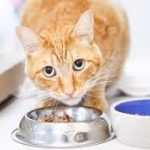 Best Dog Food And Cat Food Brands For Every Budget
Best Dog Food And Cat Food Brands For Every Budget
 7 Dogs And 11 Cats That Will Never Eat The Same Food Again
7 Dogs And 11 Cats That Will Never Eat The Same Food Again
 9 Reasons Why You Should Consider Making Your Cat Or Dog A Vegan
9 Reasons Why You Should Consider Making Your Cat Or Dog A Vegan
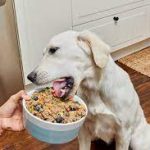 8 Healthy Cat And Dog Foods You Should Feed Your Pet
8 Healthy Cat And Dog Foods You Should Feed Your Pet
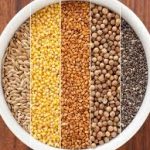 8 Common Ingredients You Should Not Feed Your Dog Or Cat
8 Common Ingredients You Should Not Feed Your Dog Or Cat
 10 Things Pet Owners Should Know About Dog Food
10 Things Pet Owners Should Know About Dog Food

